|
|
|
Sort Order |
|
|
|
Items / Page
|
|
|
|
|
|
|
| Srl | Item |
| 1 |
ID:
192474
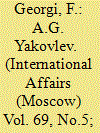

|
|
|
|
|
| Summary/Abstract |
THE Embassy of Russia in Israel has prepared an online exhibition, "A.G. Yakovlev: 10 Years of Service as Russian Imperial Consul General in the Holy Land," to honor the memory of outstanding diplomat and Orientalist Alexander Yakovlev (https://yakovlev-jerusalem.ru). The website has desktop and mobile versions. His biography, digitized archival materials, documents, and photos (some of them never before published) serve as an excellent illustration of the history of Russia's presence in the Holy Land in the latter half of the 19th century.
|
|
|
|
|
|
|
|
|
|
|
|
|
|
|
|
| 2 |
ID:
126656
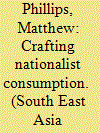

|
|
|
|
|
| Publication |
2013.
|
| Summary/Abstract |
Following the revolution of 1932 that ended absolute monarchy in Siam, a new government came into power that sought to legitimize its rule by encouraging mass identification with the state. Practically, the expansion of a wage economy and the development of a state-led education system were seen by government officials as central to promoting a sense of citizenship to as yet disinterested rural communities. Throughout its first decade in power, the government thus set up projects to provide such groups with skills that might contribute to their overall material advancement. Following the lead of similar endeavours, particularly in India, one of the principal ways in which it would do this was through the production and bringing to market of cotton textiles. However, with foreign imports both superior in quality and cheaper than anything produced internally, the state struggled to establish a public relations message that might convince consumers to purchase Thai-produced textiles. As a result of specific limitations rooted in Thailand's ambiguous status globally, this meant that Thai leaders struggled to replicate the success of such movements elsewhere
|
|
|
|
|
|
|
|
|
|
|
|
|
|
|
|
| 3 |
ID:
111521
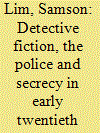

|
|
|
|
|
| Publication |
2012.
|
| Summary/Abstract |
The detective figure, literary and real, emerged in Siam between the late nineteenth and early twentieth centuries to bring clarity to increasingly complex social and political situations. In early detective fiction including the Seup saphakan [Investigating it All] (1892-97) and Nithan Thorng-in [The Tales of Thorng-in] (1904-05) series this was certainly the case - mysteries were solved, secrets revealed. In real life, however, the state's deployment of an army of detectives did not so much clarify as codify mysteries. This paper examines the links between the literary and the real detective, arguing that the appearance of detective fiction provided the vocabulary for understanding and dealing with social and political change in early twentieth century Siam.
|
|
|
|
|
|
|
|
|
|
|
|
|
|
|
|
| 4 |
ID:
167168
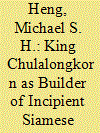

|
|
|
|
|
| Summary/Abstract |
In his long reign, King Chulalongkorn displayed deep wisdom and political acumen in laying down the foundation of the Siamese nation-state. He continued the project of his father in modernizing Siamese state and society. In the early period of his reign, his efforts were opposed by conservative forces and vested interested, but he bid his time and pressed on when situation improved. With a weak military and no support from Britain, he was forced to give outlying territories to France under gunboat threats. The event spurred him on to speed up and intensify the program to modernize and build a unitary and absolutist modern state. His visits abroad and other exposures to the outside world stimulated him to take steps to build a Siamese nation by nurturing a collective sense of identity of the peoples in Siam. By virtue of his achievements, he left behind a significant legacy and a distinctive imprint on the Thai political culture. The paper discusses to what extent was Siam different from her neighbors, given the fact that she was able to escape being colonized.
|
|
|
|
|
|
|
|
|
|
|
|
|
|
|
|
| 5 |
ID:
113345
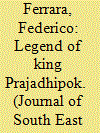

|
|
|
|
|
| Publication |
2012.
|
| Summary/Abstract |
The figure of King Prajadhipok (r. 1925-35), Siam's last absolute monarch, remains of great significance to Thailand's contemporary political discourse. King Prajadhipok's historical role as the 'founding father' of Thai democracy, in particular, lies at the heart of the Chakri dynasty's claim to democratic legitimacy - a claim that is now widely questioned, both at home and abroad. This article re-examines King Prajadhipok's conduct in the early days of constitutional government in Siam. While the King's status as the father of Thai democracy is exposed as a myth, his actual historical legacy is shown to have been no less profound.
|
|
|
|
|
|
|
|
|
|
|
|
|
|
|
|
| 6 |
ID:
122907
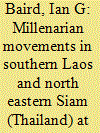

|
|
|
|
|
| Publication |
2013.
|
| Summary/Abstract |
Interrelated holy men millenarian movements destabilized southern Laos and North East Siam (Isan) at the turn of the twentieth century. In contrast to those who have interpreted these uprisings as purely anti-state, the author presents evidence to suggest that Champassak royals played crucial roles in supporting the revolts, even to the extent of masterminding rebellions against both the French and the Siamese in order to enhance their own power. The findings of this research illustrate the varying power structures that existed within lowland states in mainland South East Asia at the beginning of the twentieth century, a point that has implications with regard to James Scott's (2009) arguments in The Art of Not Being Governed: An Anarchist History of Upland Southeast Asia.
|
|
|
|
|
|
|
|
|
|
|
|
|
|
|
|
| 7 |
ID:
160151
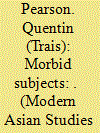

|
|
|
|
|
| Summary/Abstract |
This article examines the question of Siamese sovereignty in the era of high imperialism through the lens of medical jurisprudence. Although Siam (Thailand) was never formally colonized, it was subject to unequal trade treaties that established extraterritorial legal rights for foreign residents. In cases where a foreign resident was suspected of having harmed a Siamese subject, the Siamese state had to appeal to foreign consular officials to file charges against the suspect. Standards of forensic evidence were crucial in such cases. While medical jurisprudence helped to bolster racial privilege in other colonial legal jurisdictions, this article argues that these disputes rendered the dead and injured bodies of Siamese subjects into potentially powerful pieces of leverage against foreign residents and their political representatives. The dead bodies of Siamese subjects became grounds for challenging foreign courts and asserting Siamese sovereignty.
|
|
|
|
|
|
|
|
|
|
|
|
|
|
|
|
| 8 |
ID:
179403
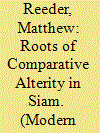

|
|
|
|
|
| Summary/Abstract |
This article identifies a moment of conceptual innovation—the 1830s to the 1850s—in which everyday artists and writers in Siam were tasked with creating comparative representations of the peoples of the world. Although their compositions took a variety of formats, they departed from earlier representations of alterity by devoting equal attention to each ‘type’, including the Thai themselves. This approach is best exemplified in three mid-nineteenth-century works: (1) a set of archetypal portraits of about 20 peoples painted on the shutters of a major Buddhist monastery, (2) sculptures of 32 peoples at the same monastery with a short poem describing each one, and (3) entries defining terms for peoples in an early Thai–Thai dictionary. The systematic formatting of these works drew on similar compositions circulating across the nineteenth-century globe. Yet, despite the presence in Bangkok of foreign interlocutors and imported books and prints, the mid-nineteenth-century compositions preserve ethnic tropes and practices of expression specific to Siam. In addition, the agents of intellectual innovation were not restricted to the usual princely or missionary protagonists. It was a motley cast of anonymous artists, local scholars, and middling officials who tapped traditional genres of composition and local markers of differentiation to render the peoples of the world as comparable, generic, and fixed.
|
|
|
|
|
|
|
|
|
|
|
|
|
|
|
|
| 9 |
ID:
122905
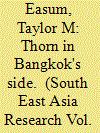

|
|
|
|
|
| Publication |
2013.
|
| Summary/Abstract |
Scholarship on the integration of Siam's northern periphery has largely overlooked the role of sacred space in the transition to modernity. While Lanna had been politically and economically integrated into modern Siam, sacred space remained a contested point of articulation between local elites and Bangkok officials long into the twentieth century. Khruba Sriwichai's movement to restore sacred spaces throughout the region shows not only how resistance to Siam continued well after the political-economic integration of the region, but also how this resistance drew on the legacy of sacro-spatial legitimacy, once a crucial part of the pre-modern Chiang Mai state.
|
|
|
|
|
|
|
|
|
|
|
|
|
|
|
|
| 10 |
ID:
180311
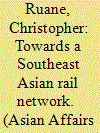

|
|
|
|
|
| Summary/Abstract |
This article will relate a history of planned railway routes passing through Bangkok or elsewhere in Thailand in pursuit of linking the potentially vast commercial market of China with the transport hub of Singapore. Those plans historically did not come to full fruition. But the current Chinese-backed plans mean that a rail link between China and Singapore is finally likely to become a reality within the coming decade. The benefits for Thailand are contested: while there will be more passenger and freight capacity the financial cost will be high. But there will for the first time in history be a direct rail connection from China to the Malayan peninsula. Indeed in theory it will be possible to board a train in Britain and step off one in Singapore, without having used any other form of transport on the way. Chinese motivations are commercial and geopolitical, as were those of historical schemes by other countries. Unlike historical schemes, however, China looks set to make the planned southeast Asian railway network a reality.
|
|
|
|
|
|
|
|
|
|
|
|
|
|
|
|
| 11 |
ID:
135044
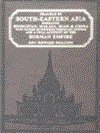

|
|
|
|
|
| Publication |
New Delhi, Asian educational services, 2004.
|
| Description |
2 vol.set; xi, 324p.Hbk
|
| Contents |
Vol I (Contains Map), Old Publication
|
| Standard Number |
8120618009
|
|
|
|
|
|
|
|
|
|
|
|
Copies: C:1/I:0,R:0,Q:0
Circulation
| Accession# | Call# | Current Location | Status | Policy | Location |
| 057967 | 915.9/MAL 057967 | Main | On Shelf | General | |
|
|
|
|
| 12 |
ID:
126643
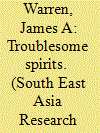

|
|
|
|
|
| Publication |
2013.
|
| Summary/Abstract |
Although alcohol has long been a feature of Thai society, historical evidence indicates that excessive drinking on a regular basis is a relatively recent phenomenon. During the nineteenth century, there were significant quantitative and qualitative changes in both alcohol consumption and production in Siam, due largely to the introduction of new alcoholic beverages and methods of distillation by Chinese immigrants and Western entrepreneurs. As public drunkenness became more common, excessive drinking was blamed for an apparent increase in violent crime throughout the kingdom. This paper examines how the Thai government tried to manage the upsurge in drunken behaviour and the obstacles it faced in doing so. Most of these problems stemmed from the limits on the kingdom's fiscal and judicial sovereignty imposed by the unequal treaties it had signed with the Western imperial powers; as such, they are indicative of Siam's semi-colonial status during this period.
|
|
|
|
|
|
|
|
|
|
|
|
|
|
|
|
|
|
|
|
|